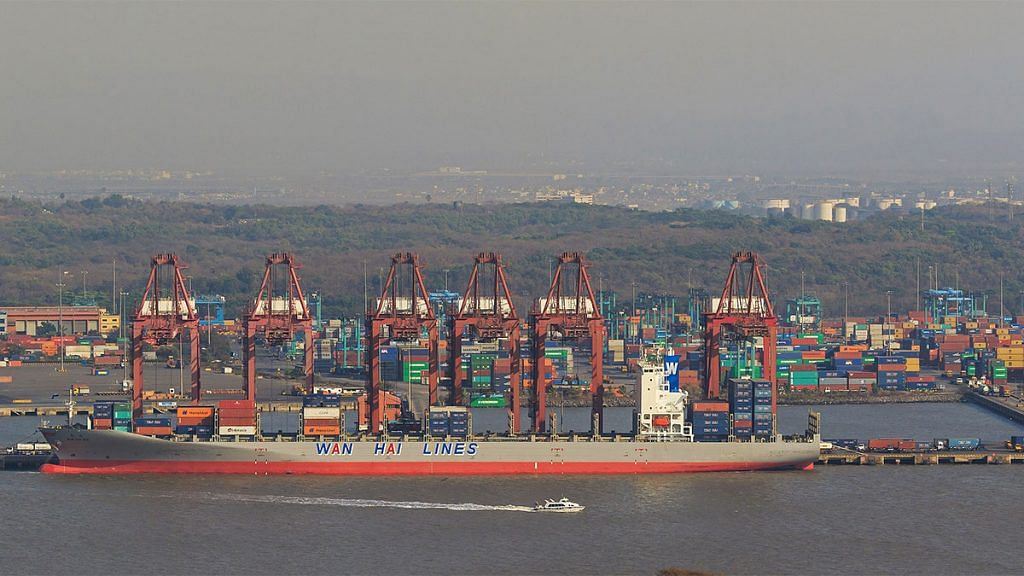New Delhi: India’s exports to China have risen over the last few years even as its imports have fallen. But a closer look reveals unequal bilateral trade.
Trade numbers between 2014-15 and 2019-20 show that export of low-value raw materials and import of high-value manufactured goods has characterised India’s trade relationship with China.
In episode 716 of Cut the Clutter, ThePrint’s Editor-in-Chief Shekhar Gupta explains why India’s trade ties with China are disadvantageous and colonial.
If we look at the Indian history of colonialism under Britain, it is well known that until the 17th century, India was a dominant player in global trade. India was a big exporter of finished goods, particularly textiles, noted Gupta.
India and other colonies were producing cotton, which was then going to Britain and they were converting this into textiles, which were coming right back to India. That is how Gandhi started his Swadeshi movement saying that we will make our own cloth. This is the essence of colonialism, he said.
It is a provocative question to ask whether we are a colony of China when it comes to trade, Gupta said. “But if we look at data, it is true.”
Also read: How Modi is repeating Nehru’s mistake by evoking self-sufficiency
What can qualify as a colonial trade relationship?
India enjoys a nearly $30 billion surplus trade with the US, but has a $45-50 billion trade deficit with China. With this argument, the US should be a colony of India and India should be a colony of China, but it does not work like that, said Gupta, adding that it depends on what the countries are exporting and importing.
India, for instance, has a trade deficit of $22 billion with Saudi Arabia. However, this is not a colonial relationship because Saudi Arabia sends India the raw material that it does not produce, like crude oil and cooking gas.
In case of China, India’s exports generally have remained 1/5th of India’s imports from China and over the last six years, India’s average trade deficit with China stands at $57 billion.
India exports iron ore, a few refined petroleum fuels, small organic chemicals, refined copper, cotton yarn and cotton to China. It was a large exporter of refined copper too but following the shutdown of Sterlite copper’s plant, India went from an exporter of copper cathodes to a net importer, he said. India also exports cotton, raw cotton and cotton yarn to China which converts it into textiles, and Indian mills import that.
We buy computers, phones, video equipment, semiconductor devices, electronic circuits, transistors, heterocyclic compounds used in pharma and dyes, fertilisers, TV cameras, automobile parts, and capital project equipment from China, Gupta said.
Therefore most of India’s imports from China are complex manufactured goods, while exports to China are low-value goods, which we can “call a colonial relationship”, he added.
Similarities with British colonialism
India’s colonial trade relationship with China has similarities with the drain system the British Empire had imposed on India, Gupta noted.
The drain theory suggested how a free trade policy followed by the British in India saw an excess of exports of raw materials from India but without any improvement in the corresponding economic prospects.
In 2019, India enjoyed a trade surplus of $28.8 billion with the US, but qualitatively, we have exported high-quality services to the US. We import fuels, precious metals and stones, particularly diamonds or diamonds, military aircraft, and agricultural imports including tree nuts, almonds and pistachio.
Meanwhile, India exports diamonds, finished pharma, machinery, spices, rice and essential oils to the US.
India’s current trade relationship with China, however, is purely disadvantageous for India, Gupta concluded, adding that the solution is not to stop buying from China, but to start manufacturing more and to start reflecting on what is it that “destroys our manufacturing system”.
Watch the full episode here:
Also read: What 100 contracts with secrecy clause reveal about China’s development lending
